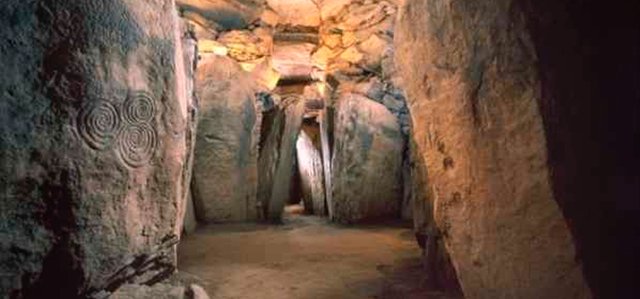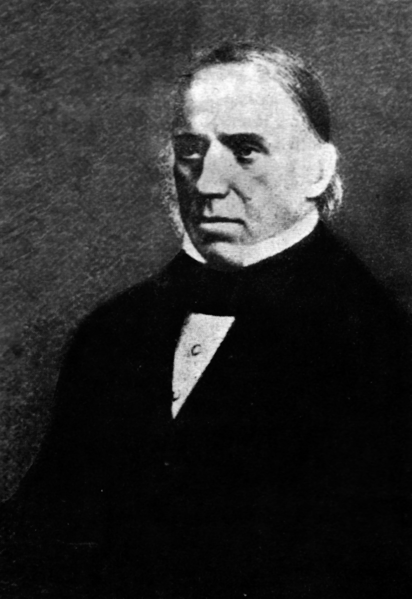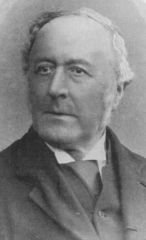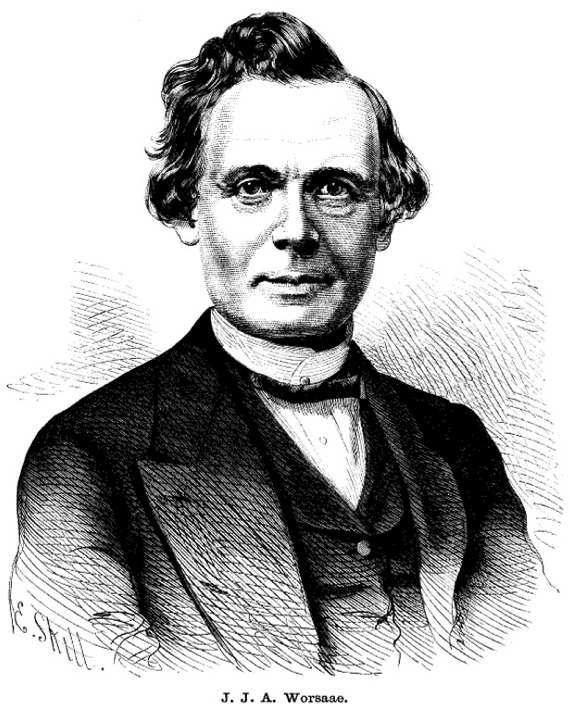Ireland and the Short Chronology – Part 7
- How Old Is Newgrange? (Part 4)

The second half of the nineteenth century marked a watershed in the study of Irish antiquities, for it was in these decades that the gentlemanly pursuit of antiquarianism was replaced by the science of archaeology, and the amateur antiquary yielded his place to the professional archaeologist. This was a gradual process and there was considerable overlap between these different approaches to the study of the past. Witness the Ordnance Survey of Ireland, which began in the 1830s. Its systematic and meticulous recording of the country’s historical remains epitomized the scientific method, but its leading scholars—George Petrie, John O’Donovan and Eugene O’Curry—were largely self-taught amateurs.
The gradual shift from antiquarianism to archaeology was not unique to Ireland: it was a European phenomenon, whose pioneers were mainly British and Danish, and it was principally visitors from abroad who were responsible for the changes that took place in Ireland. But the introduction of archaeological principles, such as Stratigraphy and the Three-Age System, met with considerable resistance from this country’s native scholars. This was mainly due to the disconnect between the two views of Irish prehistory that were emerging: the antiquarians, relying heavily on Ireland’s literary traditions, had developed a detailed picture of Irish prehistory which did not resemble even closely the picture the archaeologists were uncovering.
Eugene O’Curry, in particular, was skeptical of the application of these new-fangled ideas to the study of Irish antiquities. In 1854 he was appointed Professor of Irish History and Archaeology at the newly established Catholic University of Ireland, but in his lectures he made it clear that he considered history the master and archaeology the servant. Lecturing on stone axes and celts in 1860, he remarked:

... let me observe that nothing has been yet written to prove, or even to show any probability, that either of these kinds of stone implement was the rude creation of uncivilized man, in this or the neighbouring countries of Britain, or Scotland, or in Denmark ... I am led into these observations from circumstances that have occurred within a comparatively recent period, when opinions have been put forward, on assumed authority, to the effect that man in his uncivilized state had first recourse to weapons and tools of stone for offensive and domestic purposes, not having yet learned the art of the fusion and manufacture of metals, with which, however, he subsequently became gradually acquainted. On this assumption, the Society of Northern Antiquaries of Copenhagen were, I believe, the first who undertook the systematic classification of their great museum of national antiquities into three periods or classes, namely, “the Stone”, the “Bronze”, and the “Iron periods”, assuming that each of these classes marked a distinct period and people in the history of their country ... Such are the fundamental dogmas laid down by the northern antiquaries; dogmas laid down, I must say, without any reference whatever to historic or traditionary authority ... These very plausible archaeological dogmas of the Northern Antiquaries were received with seeming satisfaction and perfect faith by, I believe, the far greater part of the antiquarians of Europe, but perhaps less generally in Dublin than anywhere else. (O’Curry 265-267)
In his introduction to these lectures On the Manners and Customs of the Ancient Irish, William Kirby Sullivan had the following to say:
Distrust of the crude views of writers on prehistoric archaeology: The ignorance of even the most elementary archaeological and historical facts, and the want of critical judgment displayed by many ethnologists and geologists who had first entered the domain of the archaeologist, led sober investigators like O’Curry to look with suspicion upon their classification of prehistoric antiquities according to the three “ages”. Those whose pursuits and experience render them best qualified to judge of historical evidence, are not, however, necessarily best able to decide a geological question; and Prehistoric Archaeology had now advanced to a stage in which it was necessary to combine both historical and geological investigations ... While, on the one hand, no one can deny that the discovery of the use of metals marked an era in human culture, and that previous to that discovery the tools and weapons were made everywhere of stone, bone, and horn; on the other, there is no real evidence that the art of making bronze or even copper preceded that of making iron ... The Greeks, Romans, Celts, Germans, and [Slavs], all alike knew iron; and consequently the use of the terms “stone age”, “bronze age”, or “iron age”, are, except in a very limited sense, incorrect as regards those branches, though they might be strictly true, if applied to the parent Aryans. (Sullivan ccccviii ... ccccviii ... ccccix)
Sullivan followed up these remarks with a lengthy and detailed discussion of the sources and composition of the bronzes of the ancient world, which is still relevant today and well worth reading. Sullivan studied chemistry under Justus von Liebig at Giessen, where he earned his doctorate. He was appointed Professor of Chemistry at the Catholic University in 1856.
William Frederick Wakeman
William Frederick Wakeman, a pupil of George Petrie and another contributor to the Ordnance Survey of Ireland, is a fine example of an Irish antiquarian who was reluctant to “contaminate” our native traditions with suspect ideas from abroad. His Handbook of Irish Antiquities (1848) proved so popular that revised and enlarged editions appeared in 1891 and 1903. Wakeman’s opinions on Newgrange were in accord with those of his colleagues on the Ordnance Survey:

The cairn of Newgrange, in the county of Meath, lying at a distance of about four miles and a half from Drogheda, is perhaps, without exception, the most wonderful monument of its class now existing in any part of western Europe. In one point, at least, it may challenge comparison with any Celtic monument known to exist, inasmuch as the mighty stones of which its gallery and chambers, of which we shall speak hereafter, are composed, exhibit a profusion of ornamental design, consisting of spiral, lozenge, and zig-zag work, such as is usually found upon the torques, urns, weapons, and other remains of pagan times in Ireland. (Wakeman 21-22)
Wakeman was not to be drawn on the age of the monument:
We shall here say nothing of its probable antiquity, as it is anterior to the age of alphabetic writing; and indeed it would be in vain to speculate upon the age of a work situate upon the banks of the Boyne, which, if found upon the banks of the Nile, would be styled a pyramid, and perhaps be considered the oldest of all the pyramids of Egypt. (Wakeman 22)
By 1903, however, those foreign notions had taken root in the soil of Irish academia. In John Cooke’s third edition of Wakeman’s Handbook of Irish Antiquities, Newgrange’s position within the Three-Age System is firmly fixed:
A discussion of the evidence upon which expert opinion is based, as to the date of these monuments, is outside the province of this book. It takes into consideration the character of the architecture, the nature of the ornamentation, and the objects found. Weighing these, the Boyne tumuli are assigned to the Early Bronze Period, and Newgrange is considered the oldest of the group. (Cooke 98)
Jens Jacob Asmussen Worsaae
Jens Jacob Asmussen Worsaae is credited today with “proving” the Three-Age System and placing archaeology on a firm scientific footing. In 1846 Worsaae visited Ireland to spread the gospel. In the course of this visit he delivered two lectures to the Royal Irish Academy. The first of these was devoted to the foundation of the National Museum of Denmark by his colleague Christian Jürgensen Thomsen and to the establishment of the Three-Age System, also by Thomsen:

For many years [Thomsen] continued to show the collection [of Danish antiquities], and to diffuse an interest in the old remains throughout the country, and all this without receiving any pecuniary emolument, I ought rather to say, at very considerable expense to himself. At last, the collection became so large, that the room in the library was far from furnishing sufficient accommodation; and the constantly increasing interest in the collection, and fresh donations of antiquities, made its removal necessary. After many difficulties, he made a great step in advance, by getting rooms in the royal palace, “Christiansborg,” in Copenhagen. He then fully carried out his idea of arranging the Pagan antiquities into three periods, the stone, brass, and iron periods, which he was the first to point out to antiquaries. (Worsaae 313)
The second lecture touched on Irish antiquities. Worsaae did not mention Newgrange itself, but it was obviously included in his discussion of stone tombs:
It is well known that a great number of stone hatchets, arrow-heads, and lance-heads, have been found in Ireland, and particularly articles formed of flint, in the northern counties ... Most of these implements of stone seem to belong to a time before all history—to an aboriginal people, who lived by fishing and hunting upon the sea-coasts and along the large rivers of Europe. The tombs of these people give the best information on this point. There are in Ireland and England a number of stone structures called Cromlechs, Druidical altars, &c., which are generally regarded as religious monuments belonging to a historical time; but excavations in Ireland (in the Phoenix Park), in Jersey, Guernsey, and several other places, have shewn that they were tombs, containing skeletons, implements of stone or bone, vases of clay, and rude ornaments of amber and bone ... There is every reason to believe that those remarkable monuments were raised by a people who had no metal, and therefore were unable to penetrate into the interior of Europe, which was then covered with forests and morasses of an immense extent. It is only through a careful examination and comparison of the skeletons and skulls found in the tumuli just mentioned, that we can get information concerning the races to which this aboriginal people belonged. This discovery of a stone period, in the history of Europe, was the first important result arrived at by the study of antiquities alone. (Worsaae 328-329 ... 329)
That final remark harks back to the point with which Worsaae had opened this lecture—a point that characterized his attitude to the written tradition preserved in Irish manuscripts:
Mr. Worsaae commenced by observing, that all the antiquities found in Ireland, as well as in other countries, are to be divided into two large classes. Those of the first are of the greater importance, being all of a time in reference to which we have no historical records. The monuments of the second class, belonging to a later period, could not give information of so much value, because we have from written records a certain degree of knowledge as to the civilization of the time; but it is a remarkable fact, that the antiquities of the second class were, until lately, regarded with the greatest interest, because of the prevailing inclination to combine the study of antiquities with that of written records. It was long before archaeologists could bring themselves to relinquish that mode of research, and come back to a critical examination of the monuments, without being influenced by written records; but the time seems at length to have arrived, when it has become possible to enter upon an entirely new inquiry into the history of the earliest state of the European nations, by means of the antiquities alone. (Worsaae 328)
This was possibly the first time that any scholar had suggested that some, at least, of the antiquities of Ireland, were created by a hitherto unsuspected race of the Stone Age, who colonized the island long before the arrival of the iron-wielding Celts.
The seeds sown by Worsaae in 1846 germinated in the minds of our native archaeologists, and in time they sprouted and ramified. The mighty gourd that grew from those seeds has cast a long and dark shadow over our true prehistory ever since.
To be continued ...
References
- Eugene O’Curry, On the Manners and Customs of the Ancient Irish, Volume II, Lecture XII, Of Weapons of Warfare in Ancient Erinn, Williams & Norgate, London (1873)
- William Kirby Sullivan, On the Manners and Customs of the Ancient Irish, Volume I, Introduction, W B Kelly, Dublin (1873)
- William Frederick Wakeman, Archaeologica Hibernica: A Hand-book of Irish Antiquities, James McGlashan, Dublin (1848)
- John Cooke, Wakeman’s Handbook of Irish Antiquities, Hodges, Figgis & Co Ltd, Dublin (1903)
- Jens Jacob Asmussen Worsaae, Proceedings of the Royal Irish Academy, Volume III, Number 57 (30 November 1846) & Number 58 (14 December 1846), An Account of the Formation of the Museum at Copenhagen, and General Remarks on the Classification of the Antiquities Found in the North and West of Europe, pp 310–315 and pp 327–344, M H Gill, Dublin (1847)
Image Credits
- Newgrange; Interior Passage: Irish America Magazine, Fair Use
- Eugene O’Curry: Wikimedia Commons, Public Domain
- William Frederick Wakeman: , Public Domain
- Jens Jacob Asmussen Worsaae: Wikimedia Commons, Public Domain